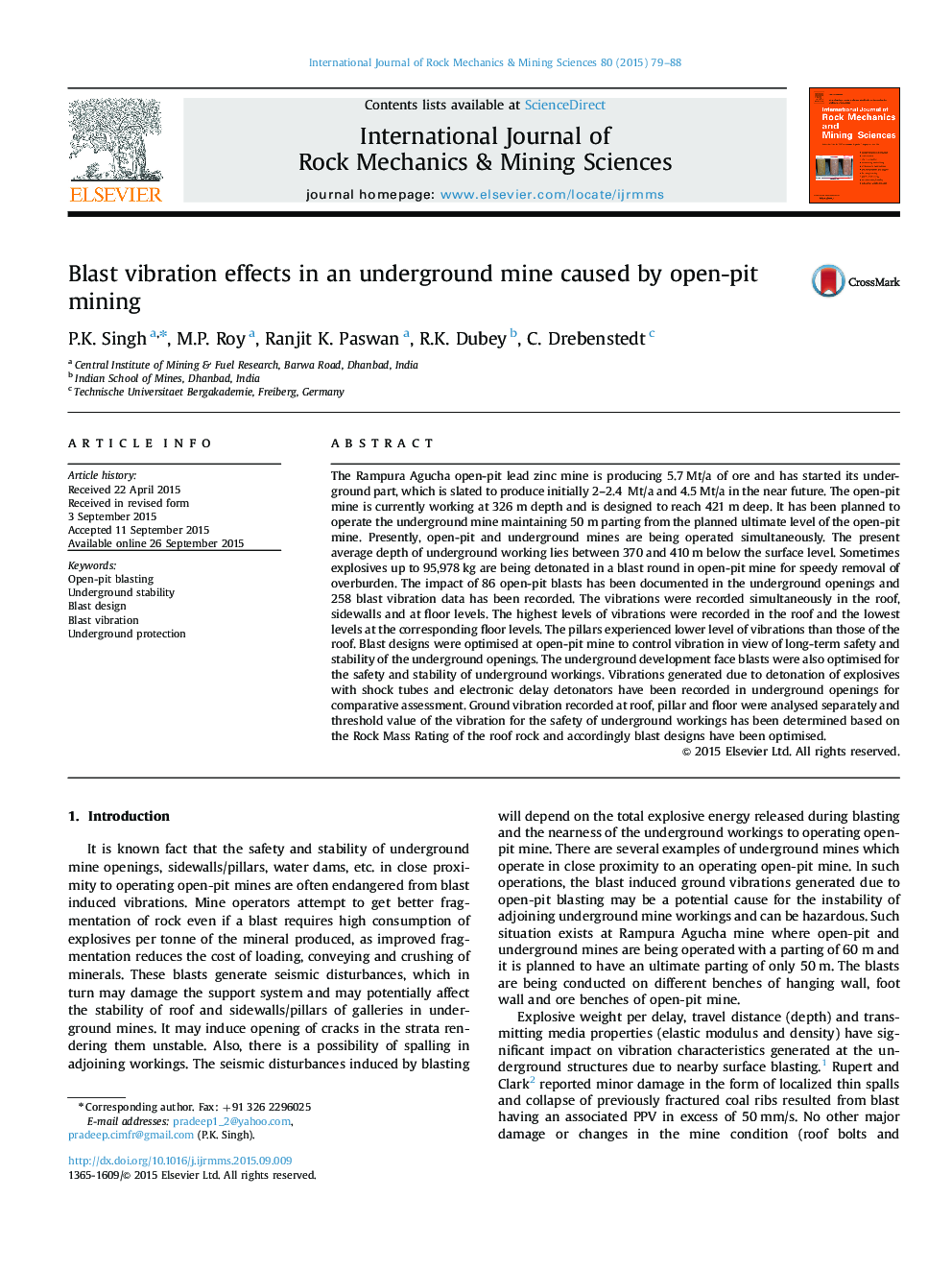| کد مقاله | کد نشریه | سال انتشار | مقاله انگلیسی | نسخه تمام متن |
|---|---|---|---|---|
| 809021 | 1468689 | 2015 | 10 صفحه PDF | دانلود رایگان |
• Rampura Agucha open-pit lead zinc mine is producing 5.7 Mt/a of ore and has started its underground part which is slated to produce initially 2–2.4 Mt/a and 4.5 Mt/a in near future.
• The impact of 86 open-pit blasts has been documented in the underground openings and 258 blast vibration data has been recorded.
• The highest level of vibrations were recorded in the roof and the lowest levels at the corresponding floor levels.
• The results revealed that electronic initiation system produced 8 to 10% lower level of vibration in comparison to Nonel initiation system in underground openings.
• Precious mineral is being exploited from open-pit as well as from underground mines with the help of optimised blast design.
The Rampura Agucha open-pit lead zinc mine is producing 5.7 Mt/a of ore and has started its underground part, which is slated to produce initially 2–2.4 Mt/a and 4.5 Mt/a in the near future. The open-pit mine is currently working at 326 m depth and is designed to reach 421 m deep. It has been planned to operate the underground mine maintaining 50 m parting from the planned ultimate level of the open-pit mine. Presently, open-pit and underground mines are being operated simultaneously. The present average depth of underground working lies between 370 and 410 m below the surface level. Sometimes explosives up to 95,978 kg are being detonated in a blast round in open-pit mine for speedy removal of overburden. The impact of 86 open-pit blasts has been documented in the underground openings and 258 blast vibration data has been recorded. The vibrations were recorded simultaneously in the roof, sidewalls and at floor levels. The highest levels of vibrations were recorded in the roof and the lowest levels at the corresponding floor levels. The pillars experienced lower level of vibrations than those of the roof. Blast designs were optimised at open-pit mine to control vibration in view of long-term safety and stability of the underground openings. The underground development face blasts were also optimised for the safety and stability of underground workings. Vibrations generated due to detonation of explosives with shock tubes and electronic delay detonators have been recorded in underground openings for comparative assessment. Ground vibration recorded at roof, pillar and floor were analysed separately and threshold value of the vibration for the safety of underground workings has been determined based on the Rock Mass Rating of the roof rock and accordingly blast designs have been optimised.
Journal: International Journal of Rock Mechanics and Mining Sciences - Volume 80, December 2015, Pages 79–88
